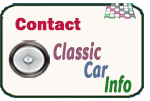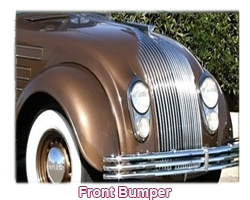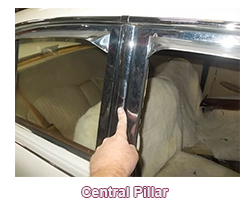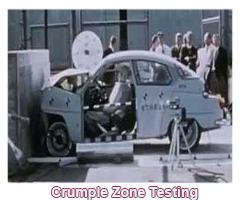Got a question, a comment, a suggestion or an offer??? - FEEL FREE TO CONTACT US ANYTIME!!
A guide to acquiring, restoring and maintaining UK or European Classic Cars of the Fifties and Sixties- as well as a recollection of the iconic cars of the era and the visionaries that produced them.

AERODYNAMICS: Describes the study in vehicle design of the flow of air monitored in a wind tunnel as it passes over and around a moving object and the forces that air makes on the object.
Describes the study in vehicle design of the flow of air monitored in a wind tunnel as it passes over and around a moving object and the forces that air makes on the object.
APRON: Describes the panel fixed to the front of a vehicle that acts as an air dam.
BODY COMPONENT: Describes any structural part that makes up the body of a vehicle.
BODY PANEL: Describes items of sheet metal that form the outside body pieces.
BODYWORK: Describes the complete body structure mounted on the chassis of a vehicle with a separate chassis and the entire sheet metal panel for unibody vehicles.
BUMPER: Describes a tubular bar or series of bars designed to protect the front and rear of a vehicle
BUMPER BRACKET: Describes the device that attaches the bumper to the vehicle's frame, body, or chassis
BUMPER FILLER: Describes a small panel usually made of plastic that fits between the bumper and the vehicle's body.
CENTRELINE: Describes an imaginary line that passes from the front to the rear of a vehicle, halfway between the distance between the left and right side of the car.
CENTRE OF GRAVITY (CG): Describes that point in an object, if through which an imaginary pivot line was drawn, would leave the object in balance. In the vehicle, the closer the weight to the ground, the lower the centre of gravity.
CENTRE PILLAR: Describes the supporting post located in the middle of the car and holds up the roof. It is also called the "B-post" or "B-pillar".
CLEARANCE FIT: Describes parts assembled so that there is clearance between them so that one element can slide in or on the other.
CLEARANCE HEIGHT: Describes the distance between the ground and the lowest portion of the bottom of a vehicle.
CLOSING PANEL: Describes a panel that is used to cover an opening in the car's body.
CORE SUPPORT: Describes the framework that serves as the attaching point for the front fenders and grille assembly.
CORNER JOINT: Describes a junction formed by edges of two pieces of metal touching each other at an angle of about 90°
CORNER PANEL: Describes a panel used to fill a gap between larger panels or frame members meeting at an angle and to serve as a stiffener.
COWLING: Describes the part of the bodywork that provides streamlining for a usually projecting component.
COWL SECTION: Describes a subassembly of a vehicle's body shell that includes the bulkhead, cowl, and windscreen pillars preassembled in the factory and spot-welded with the other subassemblies to form the body shell.
C-POST: Describes the body post that supports the rear of the roof and to which the left and right sides of the back glass are attached.
CROSS MEMBER: Describes a brace or strut which provides structural stability for the sides of a frame -- often in the shape of an "X".
CRUCIFORM FRAME: Describes a frame with an X-shaped bracing either as a chassis frame or in a monocoque as strengthening for the floor.
CRUMPLE ZONE: Describes an area of a vehicle specifically designed to compress during an accident to absorb the energy from the impact.
DIE: Describes one of a matched pair of hardened steel blocks used to form metal into a desired shape through stamping, pressing, extruding, drawing or threading.
DIE-CAST: Describes manufacturing by forcing molten metal into a die.
DIE CASTING: Describes the formation of an accurate and smooth object by forcing molten metal or plastic into a die under pressure.
DRIP MOULDING: Describes the gutter that runs along either side of car roof to gather and transport water to the front or rear to prevent it from dripping into the car when the door is opened.
DOOR BEAM: Describes a long reinforcing bar that fits between the inner and outer shell of the car door, designed to withstand side impacts.
DOOR CAPPING: Describes the moulding between the door trim panel and the window glass.
DOOR POST: Describes the vertical members of the body shell situated either ahead of and behind the doors that also support the roof structure and reinforce the body,
DOOR SHUT: Describes the edges of a car door invisible from the outside or inside when the door is shut.
DOOR SILL: Describes the bottom part of the door frame.
DOOR SKIN: Describes the large sheet metal panel of the car door visible from the outside.
DOOR SURROUND: Describes the faces of the doorstep, door pillars, and roof section, which together make up the door aperture.
Describes the faces of the doorstep, door pillars, and roof section, which together make up the door aperture.
D-PILLAR: Describes the fourth vertical post found in a van or station wagon.
All Categories
BW4


